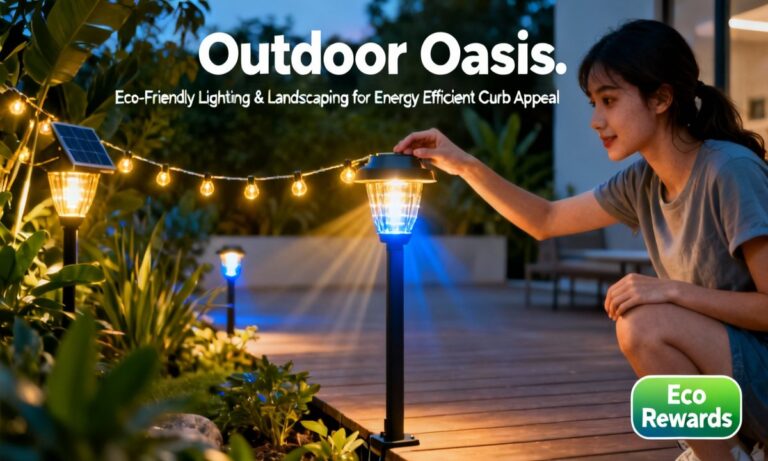Rising energy costs are a growing concern for many homeowners across the United States. Fortunately, advancements in smart home technology offer innovative solutions to manage energy usage, reduce expenses, and lessen environmental impact. Embracing these intelligent upgrades can lead to a more energy-efficient home, enhanced comfort, and greater convenience for residents.
These modern smart home solutions are becoming increasingly practical. They empower you to take charge of your home’s energy consumption, making saving money more achievable than ever. Let’s explore several proven strategies to create an energy-efficient living space.
The Benefits of Smart Energy Solutions
Investing in home automation for energy savings extends beyond just your finances. It significantly enhances your comfort and provides peace of mind. Smart devices streamline the process of customizing, monitoring, and optimizing your home’s energy footprint.
Even older properties can achieve impressive energy savings with the right smart home energy control options. Moreover, federal tax credits and utility rebates are often available to help offset the initial upgrade costs, making these improvements more accessible. You can learn more about these benefits.
Top 7 Smart Home Upgrades for Energy Savings
1. Smart Thermostats: Intelligent Climate Control
Heating and cooling systems typically account for nearly half of a household’s energy bill. Modern smart thermostats, powered by advanced artificial intelligence (AI) and sensors, learn your daily routines. They automatically adjust temperatures when you’re away, preventing unnecessary energy use.
Devices like the Google Nest Learning Thermostat and Honeywell Home models allow remote fine-tuning of comfort. You can also use voice commands through popular platforms such as Alexa, Apple Home, and Google Home, which offers effortless control over your home’s climate.
Homeowners can anticipate savings of up to 15% on heating and cooling expenses. With a typical payback period of under two years, a smart thermostat stands out as one of the most straightforward and effective ways to reduce your electric bill, delivering both convenience and substantial cost reductions.
2. Energy-Efficient LED Lighting with Smart Controls
Traditional incandescent bulbs are known for their energy waste, whereas LED lighting provides immediate energy reductions. Smart lighting systems offer comprehensive control, allowing you to manage lights remotely, set automatic shut-off schedules, or integrate them with motion sensors.
These smart lighting solutions offer a quick path to significant energy savings. You can configure them to turn off in unoccupied rooms or to adjust brightness according to natural sunlight levels. This adaptive approach ensures lighting is only used when and where it’s needed.
Maximize Lighting Efficiency Through Smart Integration
LED bulbs boast a much longer lifespan compared to conventional bulbs, leading to fewer replacements and ongoing savings. Combine this with smart dimmers and timers to achieve maximum energy efficiency throughout your home.
For enhanced home automation energy savings, pair smart lighting with integrated hubs or platforms. Many modern LED lights are compatible with voice assistants and smartphones, providing unparalleled control. When upgrading, look for ENERGY STAR rated LED bulbs for optimal energy savings.
3. Smart Appliances for Reduced Energy Use
Outdated appliances can be major energy consumers. Upgrading to energy-efficient models with the ENERGY STAR badge guarantees adherence to strict energy consumption standards. Smart refrigerators, washers, dryers, and dishwashers consume less power and feature advanced functionalities like energy tracking and adaptive cycles.
Many smart appliances provide alerts and mobile notifications regarding cycle completion or necessary maintenance. This ensures you operate them at optimal efficiency. Over time, these intelligent appliances contribute to measurable reductions in your electric bill and foster a more energy-efficient home environment.
4. Whole-Home Energy Monitoring Systems
In the realm of energy usage, knowledge truly is power. Whole-house energy monitoring systems provide real-time data on your consumption. This valuable feedback helps you identify inefficient appliances or persistent “energy vampires” that silently drain power.
Systems such as Sense or Homie Pro Mini visualize usage trends, allow you to set alerts, and can even automate energy consumption for optimized savings. Integrating these monitors with your home automation system enables data-backed decisions for significant energy reductions.
Smart Hubs: The Central Command for Savings
A smart hub serves as the command center, unifying control over devices like thermostats, lights, and appliances. Consolidating everything into one dashboard helps eliminate redundant energy use and simplifies overall energy management within your home.
5. Smart HVAC Zoning and High-Efficiency Heat Pumps
Traditional heating and cooling systems often waste energy by conditioning areas of your home that are unoccupied. Smart HVAC controls and zoning systems address this by dividing your home into distinct areas. They use sensors and motorized dampers to deliver comfort only where it’s required.
When combined with heat pumps, which are highly efficient alternatives to conventional furnaces and air conditioners, these upgrades significantly maximize comfort while drastically lowering operational costs. Smart thermostats designed for zoned systems allow for separate schedules in each space, automatically adjusting temperatures to save energy when rooms are not in use. These systems integrate well with most smart home ecosystems.
6. Automated Window Coverings for Climate Control
Heat gain during summer and heat loss in winter are major contributors to increased energy bills. Automated window coverings, including motorized shades and adaptive insulating films, intelligently sense sunlight. They adjust in real time to block excessive heat or to conserve warmth, creating an additional layer of adaptive insulation.
You can set these systems to operate automatically based on pre-set schedules or real-time sunlight sensors. For instance, shades can rise to capture solar warmth in winter or lower to reflect heat away in summer. This reduces the workload on your HVAC system, leading directly to substantial energy savings.
7. Smart Power Strips and Plugs for Electronics
Many electronic devices continue to draw power, often referred to as “phantom” or “vampire” loads, even when they appear to be off. Smart power strips and individual smart plugs effectively combat this by cutting power to devices that are not actively in use.
You can remotely control groups of electronics or program schedules to automatically eliminate energy waste. Home offices and media centers particularly benefit, as idle electronics frequently represent some of the largest hidden energy drains within a household.
Beyond Savings: Comfort, Convenience, and Sustainability
Each of these smart home upgrades not only contributes to reducing your electric bill but also enhances overall comfort, convenience, and often, security. The cumulative energy savings from these intelligent home improvements can quickly add up, typically covering the initial investment within a few years.
Many states also provide appealing rebates for upgrades involving smart thermostats, appliances, and improved insulation. Pairing smart technology with traditional enhancements, such as sealing air leaks, can further amplify the impact. Professional energy audits can pinpoint specific areas of waste, helping you develop a tailored upgrade plan.
Embracing a Sustainable and Smart Lifestyle
Adopting smart home energy upgrades goes far beyond financial savings; it represents a commitment to reducing your carbon footprint. You become an active participant in the transition towards a more sustainable future.
With programmable controls, real-time monitoring, and predictive automation driven by AI, your home can independently adjust for peak efficiency. This occurs even if you forget, simplifying your life while simultaneously making it greener.
Getting Started with Your Smart Home Energy Journey
Unsure where to begin your optimization journey? A professional home energy audit or a simple smart thermostat upgrade offers an excellent starting point. Both options provide rapid payback and user-friendly installation processes.
Consider bundling multiple upgrades for maximum return on investment and convenience. As new smart technologies continue to emerge, stay informed about available rebates and incentives, as these can often cover a significant portion of the upfront costs.
Remember that most modern smart home technology seamlessly integrates with leading platforms like Alexa, Google Home, and Apple HomeKit. This ensures flexibility if you choose to expand or modify your system over time.
Practical Tips for Enduring Energy Efficiency
- Schedule regular HVAC maintenance to ensure your system performs optimally and efficiently throughout the year.
- Enhance your home’s insulation and diligently weatherstrip doors and windows to prevent energy loss.
- Utilize smart plugs to effectively monitor and manage seasonal equipment, ensuring they only draw power when necessary.
- Educate all household members on the best practices for using smart systems to maximize their energy-saving potential.
Conclusion: Smart Homes are the Future of Energy Savings
The most intelligent homes offer more than just enhanced comfort; they are purposefully designed to be energy-efficient, cost-effective, and prepared for future demands. Whether you start with a single smart thermostat or invest in a comprehensive suite of connected devices, you are taking a crucial step.
This proactive approach will significantly reduce your electric bill and boost your home’s overall value. For comprehensive guides and further insights, explore resources from Energy Star and energy.gov. You can also inquire with your local utility provider about available rebates and programs.
Stay ahead of rising energy costs, contribute positively to a greener planet, and enjoy a home that operates smarter for you, starting today.
Ready to take control of your electric bill? You can easily check your home’s energy usage with a smart monitor. Explore recommended smart thermostats and learn about available rebates in your state to begin your savings journey today.
Empower your home, your finances, and your future. Experience the tangible difference smart home upgrades deliver in 2025 and beyond.




